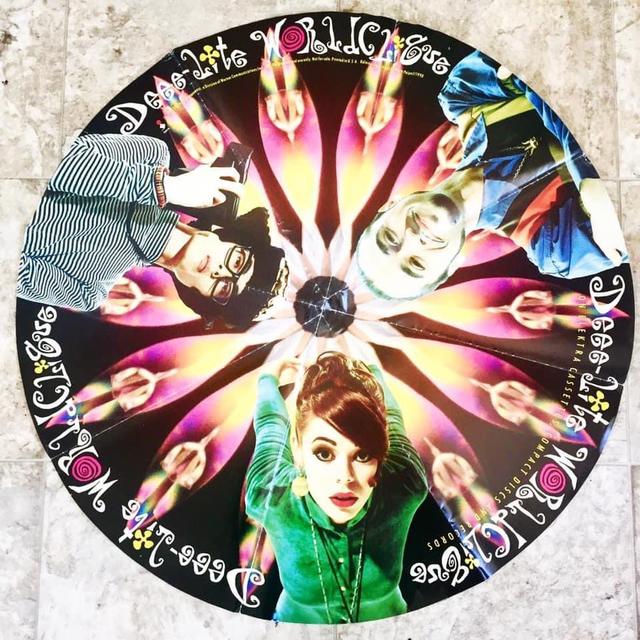August 1990: Deee-Lite Get the Party Started with WORLD CLIQUE

By the late 1980s, dance music had exploded across America. Driven by the underground house sounds of New York and Chicago (not to mention the emerging techno scene in Detroit), disco's revenge was in full swing on dance floors around the world. For young New York City artists Lady Miss Kier and then-boyfriend Super DJ Dimitry, the power of dance music -- and a well-time hit of acid -- was the catalyst for the future.
"It was my first and only time doing it," Kier revealed in 2016 (via Music Radar). "I'd never even sang before, but we tripped out and wrote three songs. Deee-Lite was formed that night."
With the Japanese DJ Towa Tei joining the Russian Dimitry and Midwest-born American Kier, the trio set about creating a sound: "We were really into that funky stuff, which wasn't that popular at the time in New York," Kier explained. "We started incorporating that with some Kraftwerk - I used to call that 'holographic techno-soul'. The main thing was that we didn't want to fit into one category. For me, the best bands fuse at least three different genres."
Honing the band's act on club stages throughout New York, Deee-Lite released debut album, World Clique, on August 7, 1990. It was that same month when the LP was announced with the release of lead single, "Groove is in the Heart."
"Q-Tip does a great verse on this. This was before Tribe blew up," Kier recalled. "He was hanging with the Jungle Brothers. We opened up for them one time at a club called Hotel Amazon, which is where I would have met Tip. We were playing that song live and he asked if he could do 16 bars on it."
"Groove is in the Heart" was a breakout smash, packing dance floors and lighting up the pop charts. The tune danced up the Hot 100 to peak at #4 for the week of November 17, 1990. The #1 song in America that week: Mariah Carey, "Love Takes Time." The track flew straight to #1 on the Billboard Dance Club Songs and Hot Dance Music/Maxi-Single Sales charts.
"Bootsy wrote a whole rap, too, which made it on one of the alternative mixes (of 'Groove is in the Heart')," Kier said. "People keep asking if Tina Turner did some tambourine on this. She didn't. I don't know where that rumor came from [laughs]. Maybe she was in the bits we sampled? As for the samples: I think Dmitry found the bass from the Herbie Hancock record, 'Bring Down the Birds,' and Towa found the drums and whistle from the Vernon Burch record, 'Get Up.'
"He introduced us to a lot of the P-Funk players who'd left that scene and were hungry to work with other artists," she added about working with Bootsy Collins. "So, Fred [Wesley] and Maceo [Parker] are on the horns here. That was the great thing about working with Bootsy. When he came, he was like, 'You need any horn players? I know a coupla guys.' Only these two legends! He introduced us to guys like Bernie Worrell, who ended up working with us later, too. I never felt worthy. These were my heroes. We ended up with a full, nine-piece live show with these guys, as well."
The album's second single, "Power of Love," followed "Groove is in the Heart" up the charts, grabbing the #1 spot on the Billboard Dance Club Songs chart. On the Hot 100, the song peaked at #47.
"This started as just an acapella melody I came up with, then Dmitry built on that hook. Then we finished it off together, sat at the piano," Kier related. "That very first version was really good. That's what I've learned over the years - don't mess with the demos too much. There's a demo version of this that's out there that actually got us the record deal. But then when it came time to do the album, we changed it a lot, I don't know why. It became less of a piano house type of track, which is what it started out as."
It was enough to send World Clique up the Billboard charts to reach #20 on the Billboard 200 for the week of November 24, 1990.
“Part of being in the Nineties is that there’s so many things to be inspired by," Kier told Melody Maker in August 1990. "That’s one of the reasons our sound is so diverse; all being from different countries and living in New York, we could hardly help it.”

